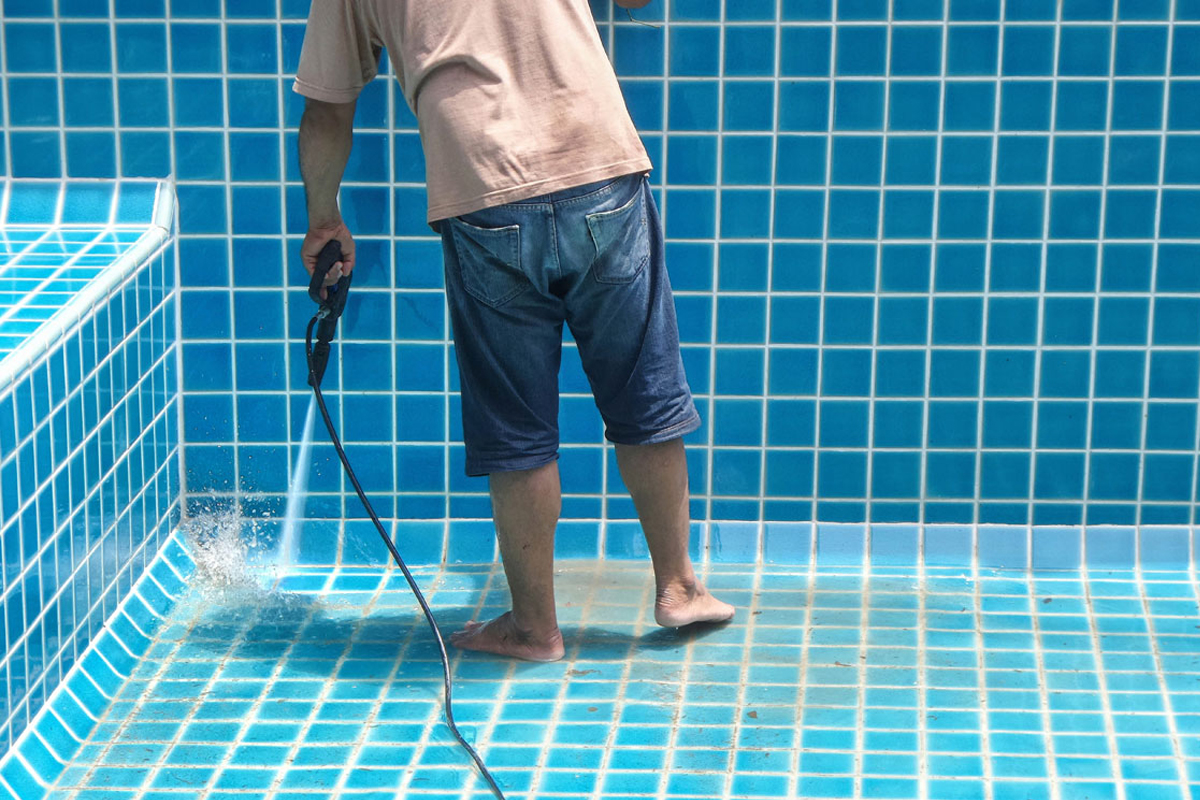Choosing the right pool tile can significantly impact your pool’s appearance, durability, and maintenance needs. With an array of styles, materials, and colors, selecting pool tiles can be a daunting task that requires careful thought and planning. It’s essential to consider factors such as material type, slip resistance, and maintenance requirements, and compatibility with the surrounding design, as these elements will determine how well the tiles perform and enhance your pool area over time. The right tile choice will not only elevate the aesthetic appeal of your pool but also contribute to safety and longevity. This guide will cover five key considerations to help you make an informed decision, ensuring your pool not only looks stunning but also remains functional, resilient, and safe for years to come. A thoughtfully selected pool tile can transform your pool area into a lasting oasis that complements your outdoor lifestyle.
Understanding Tile Material Options
When selecting pool tile, one of the first considerations is the type of material that suits your pool’s design and usage. Common options include ceramic, glass, stone, and porcelain, each offering unique advantages and potential drawbacks.
Ceramic tiles are a popular choice for pools due to their durability. cost-effectiveness, and versatility in design. They are available in various colors and finishes, making them adaptable to different aesthetics. However, ceramic tiles may lack the high-end, reflective quality found in other materials.
Glass tiles bring a luxurious, shimmering look to any pool. Known for their vibrant colors and reflective properties, they can transform a pool into a work of art. Glass tiles are highly resistant to water absorption, reducing the likelihood of cracks and breaks. Yet, their premium look comes at a higher cost, and installation is more labor-intensive.
Porcelain is another sturdy option, known for its resilience to water and chemicals, making it suitable for heavy-duty pools. Natural stone tiles, such as travertine, marble, or slate, offer a rustic and organic feel but require additional sealing to prevent staining.
Prioritizing Safety with Slip-Resistant Finishes
Safety is a crucial factor when selecting pool tile. especially for surfaces that frequently come into contact with bare feet. Pool areas can become extremely slippery, particularly when exposed to splashing water or if they feature a smooth, glossy tile finish. Choosing slip-resistant tiles, particularly for pool decks, shallow areas, and steps, is essential for minimizing accidents and ensuring safe use of the pool. Textured tiles, such as those made from natural stone or unpolished porcelain offer better traction. reducing the likelihood of slips. When selecting pool tile, look for options rated for slip resistance, especially around the pool’s perimeter and steps, where water tends to collect.
Slip-resistant finishes are also beneficial in high-traffic areas such as walkways leading to the pool and spa, as they create a safer environment without compromising the aesthetic appeal of your pool. Selecting the right pool tile can help strike a balance between style and safety, giving you peace of mind while enhancing the look of your pool.
Matching Tile Color with Pool Design
Color is a powerful element in pool design and can greatly affect the overall ambiance of your outdoor space. When choosing pool tile color, consider how it complements both the pool water and the surrounding landscape. Bright blue tiles create a vibrant, tropical effect, while darker hues like navy or deep green lend a sophisticated and tranquil look.
For a cohesive aesthetic, match the pool tile color with other outdoor elements, such as your patio, garden, or nearby structures. Earthy tones like sand and beige can create a harmonious blend with natural surroundings, while bolder colors can add a contemporary flair. Glass tiles, in particular, are available in rich, reflective colors that play beautifully with sunlight, making the pool appear deeper and more dynamic.
In addition to aesthetics, consider how the tile color may impact water clarity. Lighter colors can enhance water clarity, while darker shades can make it appear deeper, adding a dramatic effect to your pool area. Careful selection of tile color not only personalizes your pool but can also influence your pool’s visual appeal year-round.
Understanding Maintenance Requirements
The longevity and upkeep of pool tile can depend significantly on the material selected and the maintenance practices in place. Regular cleaning is crucial to prevent buildup of dirt, algae, and chemical residues that can stain or damage tiles over time.
Glass and porcelain tiles, due to their non-porous nature, are relatively easy to clean and are less prone to staining. These materials resist mold and algae growth better than natural stone tiles, which can be more susceptible to water absorption. Stone tiles, while beautiful, typically require sealing to protect against staining and fading, particularly if used in areas with high chlorine exposure.
It’s worth considering the maintenance frequency when choosing pool tile. If you’re looking for a low-maintenance option, glazed ceramic or glass tiles are excellent choices. For stone tiles, you may need professional cleaning to maintain their appearance and durability. For those seeking Spa Cleaning Services in VictorvilleMaintaining clean tiles can enhance the look and lifespan of your pool and spa area. Regular professional cleaning can help preserve your pool’s aesthetic and protect against algae, stains, and chemical damage.
Considering Installation and Durability
The installation process is another key aspect of selecting pool tile. The durability and longevity of your pool tiles will largely depend on proper installation techniques and material quality. Professional installation is often recommended to ensure that tiles are set securely and evenly, reducing the likelihood of cracks and detachment over time.
Tiles that are specifically designed for pool use tend to offer higher resistance to water, chemicals, and temperature changes. Porcelain and glass tiles are especially resilient and can withstand years of exposure to water and chlorine without degrading. However, natural stone tiles, while visually appealing, may be less durable in high-chlorine environments. Stones like marble or travertine are more porous and may require additional sealing and frequent maintenance.
It’s essential to choose tiles that can withstand environmental factors. including temperature fluctuations, UV rays, and water pressure. Investing in durable, high-quality pool tile material can prevent costly repairs in the future and maintain your pool’s aesthetic appeal for years to come.
Final Thoughts
Selecting the right pool tile involves a balance of aesthetics, safety, maintenance, and durability. By carefully evaluating material options, prioritizing slip resistance, and matching colors with your pool design, understanding maintenance needs, and considering installation quality, you can ensure your pool remains beautiful and functional for years. The process of choosing pool tiles is more than just a visual decision—it’s about creating a space that is safe, easy to maintain, and designed to last.





